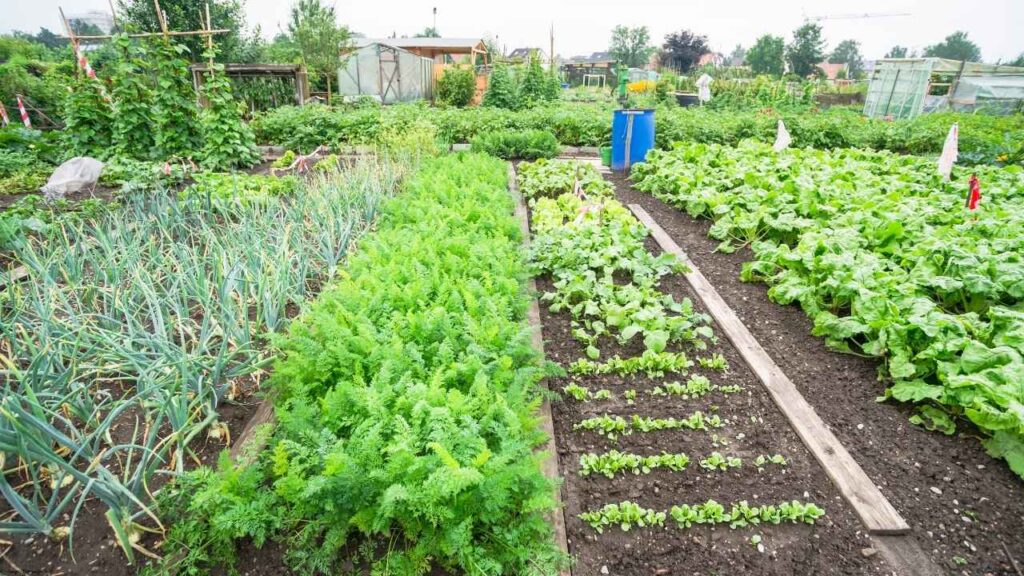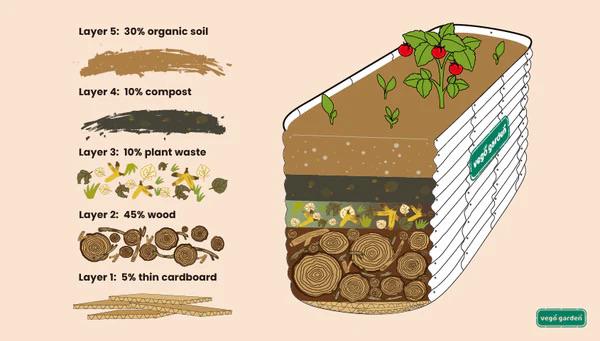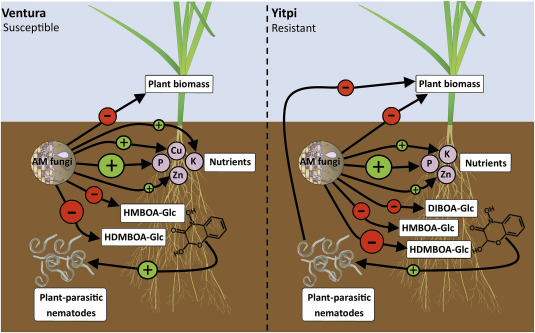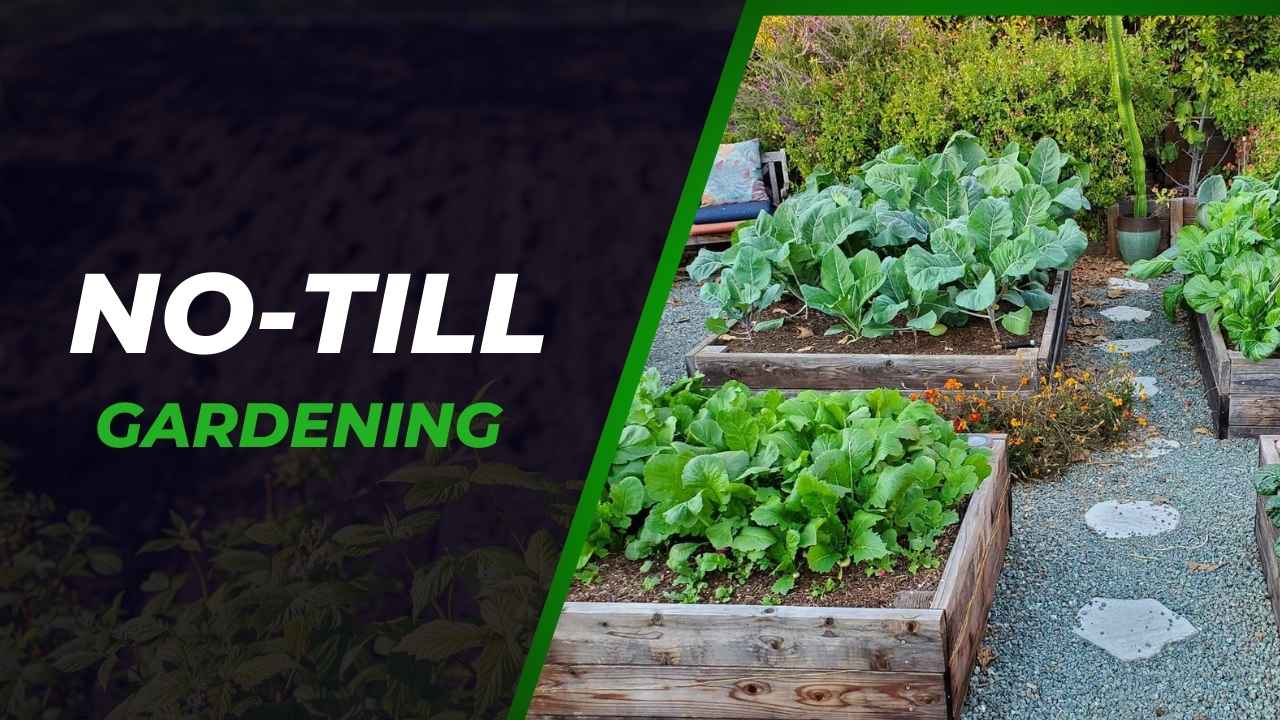Have you ever dreamt of a garden that’s bursting with life, requires less labor, and contributes positively to the environment? If so, you’re in the right place. Today, I want to delve deep into the world of no-till gardening and explore how this transformative approach can revitalize your soil health from the top down.

What Is No-Till Gardening?
No-till gardening is a cultivation method that involves minimal disturbance to the soil. Instead of the traditional practice of tilling or turning over the soil, no-till gardening focuses on layering organic materials on the soil surface, allowing nature to do the heavy lifting.
The Philosophy Behind It
At its core, no-till gardening aims to replicate the natural processes found in ecosystems like forests and grasslands. In these environments, plants grow, die, and decompose, creating a continuous cycle of organic matter that enriches the soil without human intervention. By mimicking this process, we can foster a self-sustaining garden ecosystem.
In nature, soil organisms such as earthworms, bacteria, and fungi play a crucial role in breaking down organic matter and recycling nutrients. Tilling disrupts these organisms and the soil structure they’ve helped build. No-till gardening preserves this delicate balance, promoting a healthier and more resilient soil ecosystem.
Why Go No-Till?
1. Improved Soil Structure
Tilling can destroy the soil’s natural structure, leading to compaction and reduced aeration. In contrast, no-till gardening maintains the soil’s integrity, preserving the pore spaces that allow air and water to move freely. This results in:
- Better Water Infiltration: Prevents runoff and erosion.
- Enhanced Root Penetration: Allows roots to grow deeper and stronger.
- Increased Organic Matter: Promotes nutrient-rich soil layers.
2. Enhanced Microbial Activity
Healthy soil is alive with microorganisms that:
- Break Down Organic Matter: Releasing nutrients like nitrogen, phosphorus, and potassium.
- Suppress Diseases: Beneficial microbes can outcompete harmful pathogens.
- Improve Soil Structure: Fungal networks help bind soil particles together.
By avoiding tilling, we support these microbial communities, leading to healthier plants and more productive gardens.
3. Weed Suppression
Weeds are often a gardener’s nemesis. No-till gardening combats weeds by:
- Mulching: A thick layer of organic mulch blocks sunlight, preventing weed seeds from germinating.
- Reducing Soil Disturbance: Tilling brings buried weed seeds to the surface, where they can sprout. No-till keeps them buried.
- Promoting Beneficial Weeds: Some weeds can actually improve soil health and attract beneficial insects.
4. Time and Energy Savings
Let’s face it—tilling is labor-intensive. By eliminating this step:
- Save Physical Effort: No more back-breaking labor.
- Reduce Equipment Needs: No need for heavy machinery or tools.
- Spend More Time Planting and Harvesting: Focus on the enjoyable aspects of gardening.
5. Environmental Benefits
No-till gardening is not just good for your garden; it’s good for the planet.
- Carbon Sequestration: Undisturbed soil stores carbon, helping mitigate climate change.
- Reduced Erosion: Protects topsoil from being washed or blown away.
- Conservation of Soil Moisture: Mulch layers reduce evaporation, conserving water.
| Benefit | No-Till Gardening | Traditional Tilling |
|---|---|---|
| Soil Structure | Preserved | Disrupted |
| Microbial Activity | Enhanced | Reduced |
| Weed Suppression | High (with mulch) | Low |
| Labor Intensity | Low | High |
| Carbon Sequestration | Yes | No |
| Equipment Required | Minimal | Moderate to High |
Getting Started with No-Till Gardening
Embarking on your no-till journey is straightforward. Here’s a comprehensive guide to help you start.
Step 1: Choose Your Site
- Sunlight: Ensure the area receives at least 6-8 hours of direct sunlight daily.
- Accessibility: Choose a location that’s easy to reach for planting, watering, and harvesting.
- Drainage: Avoid areas where water pools after rain; good drainage is essential.
Step 2: Prepare the Ground
If you’re starting on existing lawn or weedy areas:
- Smother the Vegetation: Lay down a layer of cardboard or several sheets of newspaper over the grass or weeds. This blocks sunlight and kills the underlying vegetation.
- Wet the Layer: Soak the cardboard/newspaper to help it stay in place and begin decomposition.
- Edge the Area: Consider installing a border to contain your garden bed and prevent grass intrusion.
Step 3: Build Up Your Layers
This is where the magic happens. You’re essentially creating a “lasagna garden” by layering organic materials that will decompose over time.
First Layer – Bulk Organic Matter:
- Straw or Hay: Use untreated straw or hay as a base layer.
- Leaves: Shredded leaves work well to add bulk.
Second Layer – Nitrogen-Rich Materials:
- Grass Clippings: Ensure they’re free of herbicides.
- Kitchen Scraps: Vegetable peels, coffee grounds, and eggshells.
Third Layer – Compost or Aged Manure:
- Compost: Provides a nutrient-rich layer for plants.
- Manure: Use well-composted manure to avoid burning plants.
Top Layer – Mulch:
- Wood Chips or Bark: Helps retain moisture and suppress weeds.
- Straw: An alternative mulch that decomposes more quickly.
Aim for a total depth of at least 6-12 inches. Over time, these layers will compress and decompose, enriching the soil beneath.

Step 4: Planting
When it’s time to plant:
- Digging Holes: Use a hand trowel or dibber to make planting holes through the mulch layers.
- Transplants: Place seedlings directly into the holes and backfill with compost.
- Seeds: For small seeds, add a thin layer of compost on top of the mulch, sow the seeds, and cover lightly.
Step 5: Maintenance
- Mulch Addition: Continually add organic matter throughout the season. This could be grass clippings, leaves, or compost.
- Watering: No-till gardens often retain moisture better, but monitor soil moisture levels, especially during dry spells.
- Pest Management:
Natural Predators: Encourage birds and beneficial insects.
Organic Remedies: Use neem oil or insecticidal soaps if necessary.
Weed Control: Hand-pull any weeds that emerge, ideally when they’re young.
Recent Breakthroughs in No-Till Gardening
Cover Crops Gain Popularity
Cover crops are plants grown primarily to benefit the soil rather than for harvest. Recent studies have highlighted their significant benefits:
- Nitrogen Fixation: Leguminous cover crops like clover and vetch fix atmospheric nitrogen, enriching the soil.
- Soil Structure Improvement: Deep-rooted cover crops like daikon radish break up compacted soil layers.
- Biodiversity: Increases the diversity of soil microorganisms.
Mycorrhizal Fungi Research
Mycorrhizal fungi form symbiotic relationships with plant roots, extending far into the soil to access water and nutrients.
- Nutrient Uptake: Enhances absorption of phosphorus and micronutrients.
- Disease Resistance: Helps plants resist soil-borne diseases.
- Drought Tolerance: Improves water uptake during dry periods.
No-till practices support these fungal networks by avoiding soil disturbance.
Tools and Equipment
While no-till reduces the need for heavy equipment, innovative tools have emerged:
- Broadforks: A manual tool that aerates the soil without inverting it, preserving soil layers.
- Mulch Rollers: Flatten cover crops to create a mulch layer.
- No-Till Seed Drills: For larger operations, these drills plant seeds without disturbing the soil.

Real-World Examples
The Brown Family Farm
Located in Iowa, the Brown Family Farm transitioned to no-till gardening and observed remarkable results:
- Yield Increase: A 30% boost in vegetable production.
- Soil Health: Improved soil organic matter content by 15% over three years.
- Cost Savings: Reduced expenses on fertilizers and pesticides due to healthier soil and plants.
- Community Impact: Became a model for sustainable farming practices in their area.
Urban Community Gardens
In cities like Detroit and New York, community gardens are adopting no-till methods:
- Space Efficiency: Maximizes production in limited spaces.
- Soil Remediation: Helps improve contaminated urban soils through layering of clean organic materials.
- Educational Opportunities: Teaches urban residents about sustainable agriculture and environmental stewardship.
Potential Applications and Future Trends
Regenerative Agriculture
No-till gardening is a pillar of regenerative agriculture, which aims to restore degraded soils and promote biodiversity.
- Holistic Approach: Integrates crop diversity, cover crops, and livestock integration.
- Climate Resilience: Builds soils that are more resilient to extreme weather events.
- Economic Viability: Can reduce input costs and improve long-term farm profitability.
Climate Change Mitigation
As awareness of climate change grows, no-till practices are gaining attention for their role in carbon sequestration.
- Carbon Farming Initiatives: Governments and NGOs are supporting farmers who adopt carbon-sequestering practices.
- Research and Development: Ongoing studies aim to quantify the carbon storage potential of no-till systems.
Technological Integration
Modern technology is making no-till gardening more accessible and efficient:
- Soil Sensors: Devices that measure moisture, temperature, and nutrient levels without soil disturbance.
- Mobile Apps: Applications that provide gardening tips, track weather patterns, and suggest optimal planting times.
- Drones and Satellite Imagery: For larger-scale operations, these tools monitor crop health and soil conditions.

Tips for Success
Start Small
- Pilot Plot: Begin with a small section of your garden to test and refine your no-till methods.
- Observe and Adapt: Monitor how your plants respond and make adjustments as needed.
Be Patient
- Soil Transformation Takes Time: It may take a few seasons for the full benefits to manifest.
- Gradual Improvement: Soil health will steadily improve, leading to better plant growth over time.
Continuous Learning
- Stay Informed: Read books, attend workshops, and join gardening forums.
- Connect with Others: Engage with the no-till gardening community to share experiences and tips.
- Experiment: Don’t be afraid to try new cover crops, mulches, or companion planting strategies.
Frequently Asked Questions
Won’t Not Tilling Increase Pests and Diseases?
Contrary to this concern, no-till gardening can reduce pest and disease issues:
- Balanced Ecosystem: A diverse soil microbiome can suppress harmful organisms.
- Habitat for Beneficial Insects: Mulch layers provide habitats for predators of common garden pests.
- Plant Diversity: Incorporating a variety of plants can disrupt pest cycles.
How Do I Deal with Perennial Weeds?
Perennial weeds can be challenging but manageable:
- Smothering: Use heavier mulch layers or tarps to block sunlight.
- Targeted Removal: Carefully dig out persistent weeds, ensuring you remove the entire root.
- Plant Competition: Dense planting can outcompete weeds for resources.
Can I Practice No-Till Gardening in Containers?
Yes, the principles apply to container gardening:
- Layering: Start with a base of coarse material for drainage, then add compost and mulch layers.
- Soil Life: Use high-quality compost to introduce beneficial microorganisms.
- Mulching: Apply mulch on top to retain moisture and suppress weeds.
Conclusion
Embracing no-till gardening has been a game-changer in my gardening journey. Not only has it revitalized the health of my soil from the top down, but it has also made the entire process more enjoyable and sustainable.
The transformation I’ve witnessed in plant vitality, soil richness, and ecosystem harmony is truly remarkable. Plus, the extra time I have from not tilling has allowed me to focus on the creative aspects of gardening, like experimenting with heirloom varieties and companion planting.
So, if you’re looking to cultivate a garden that’s both abundant and environmentally friendly, why not give no-till gardening a try? It’s a step towards a healthier garden and a healthier planet.
Happy gardening!
